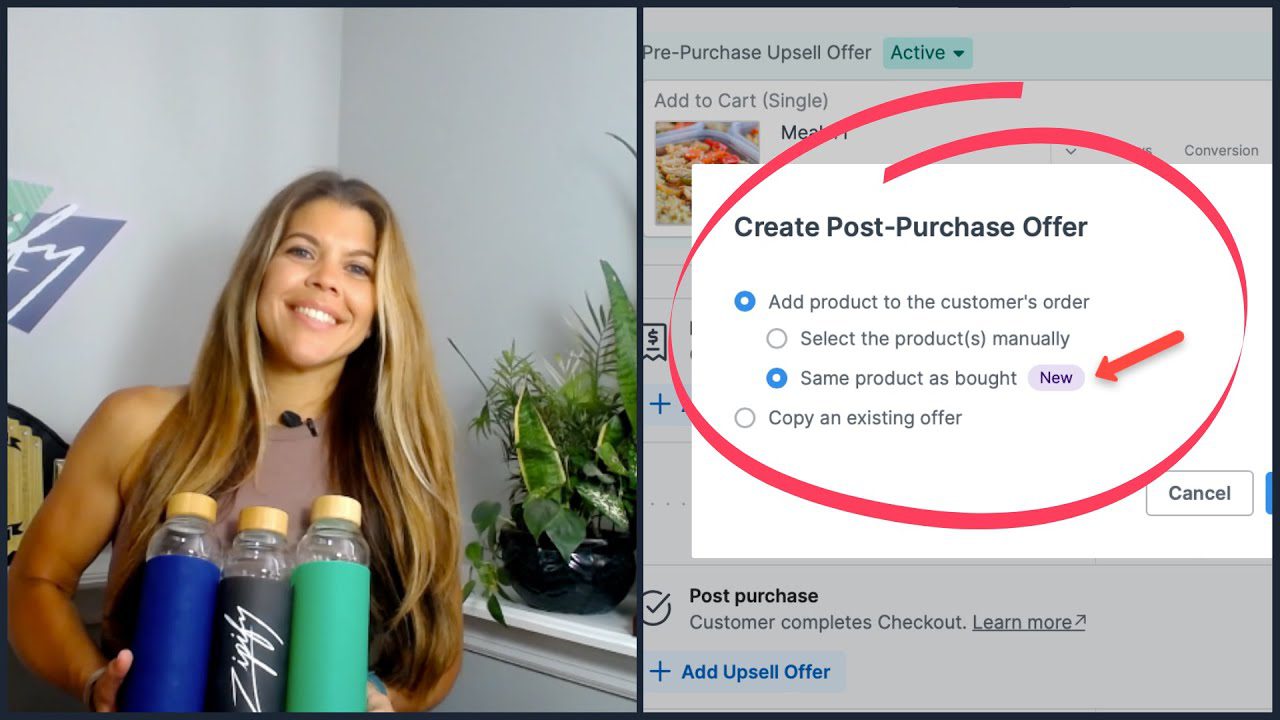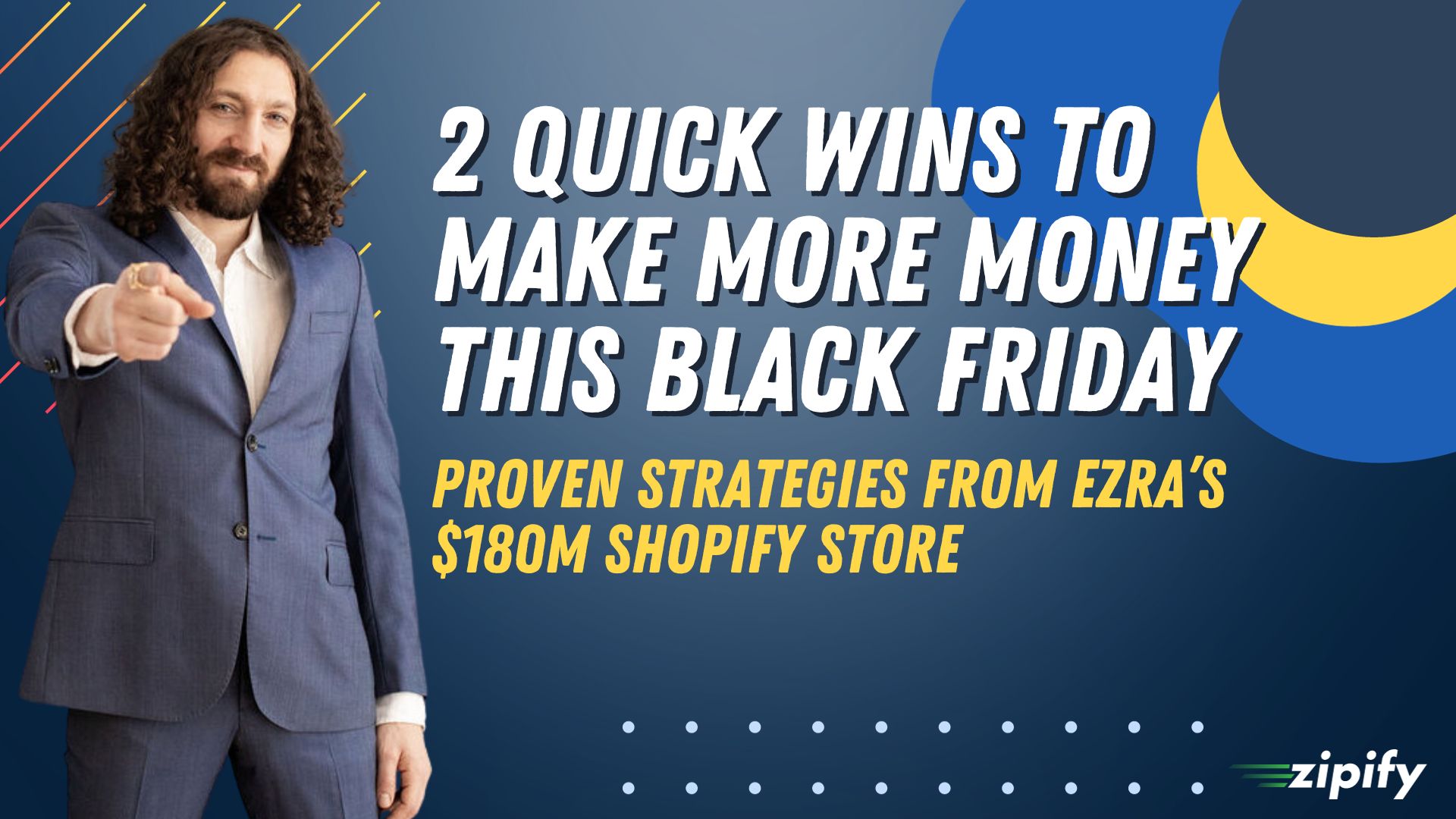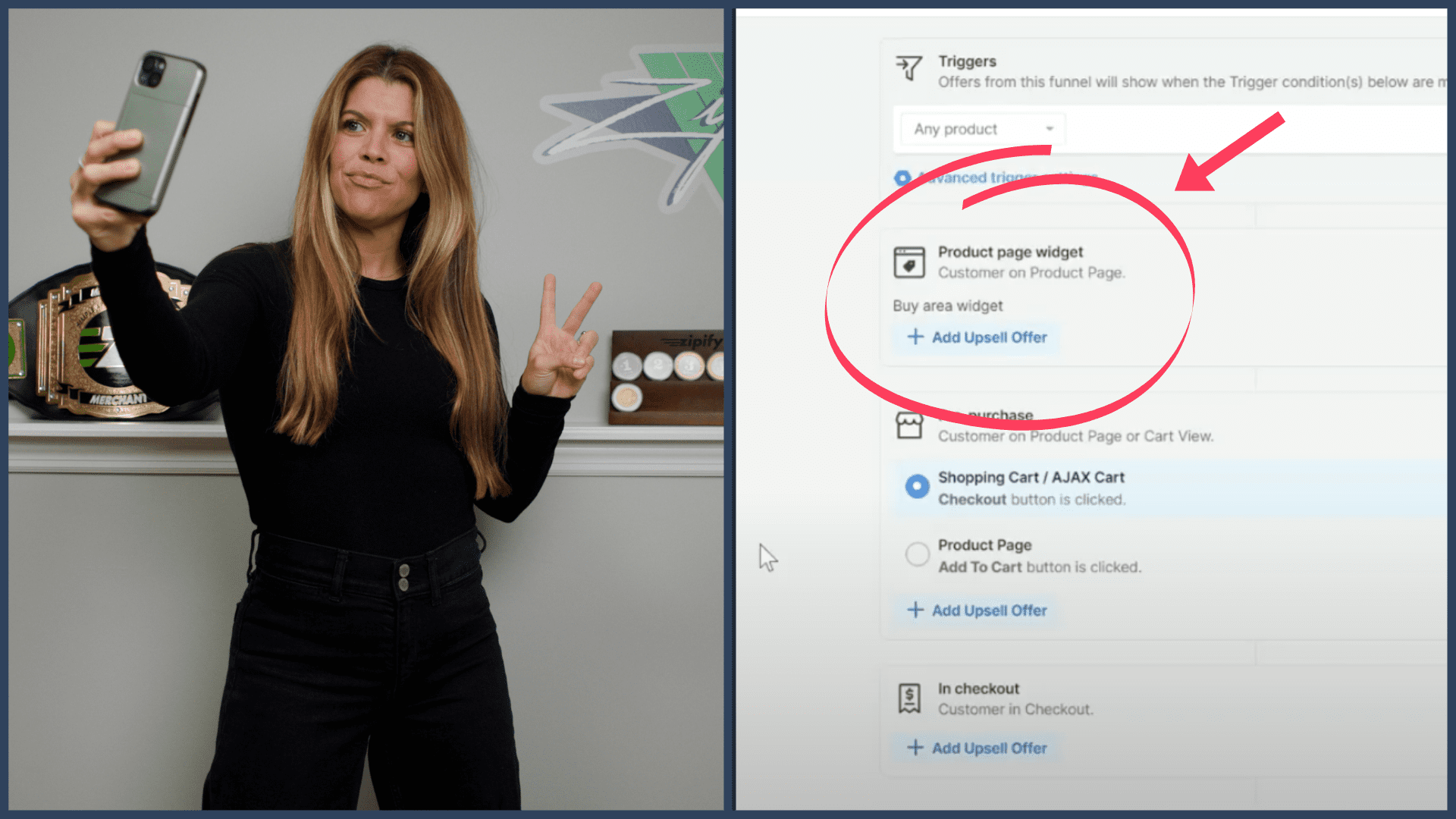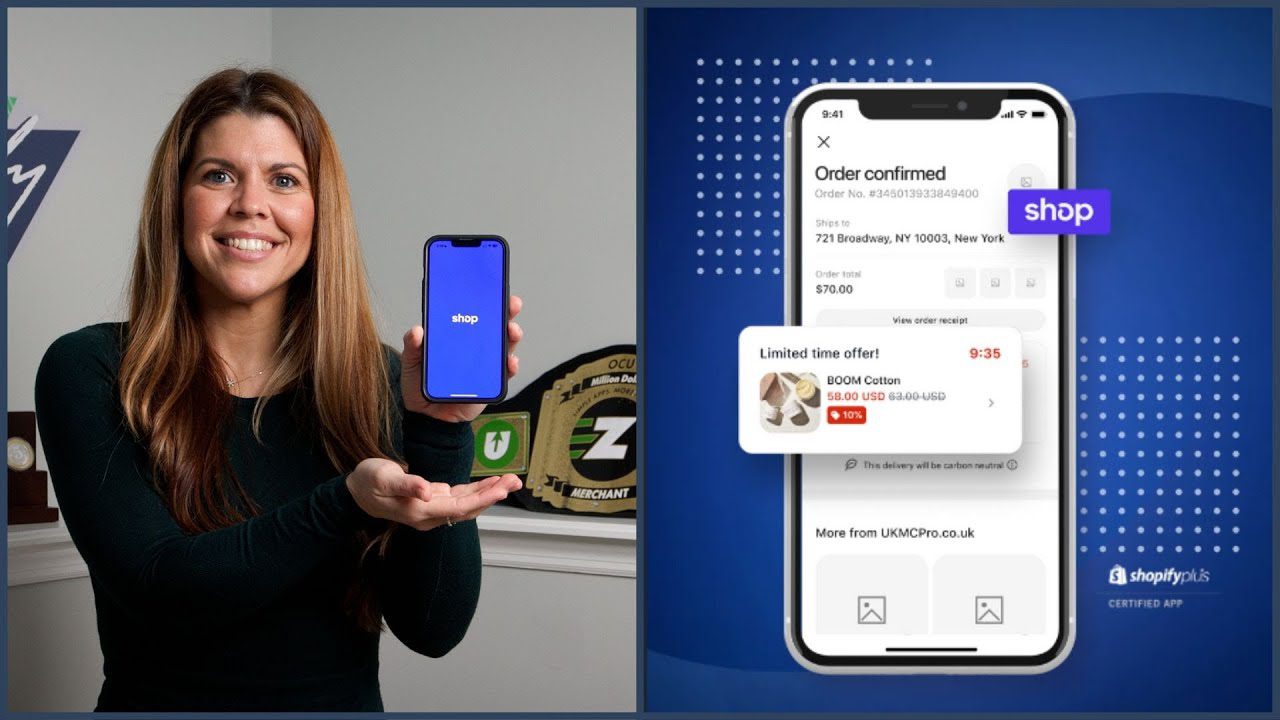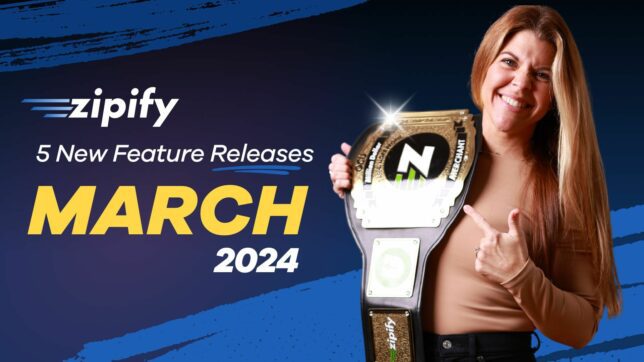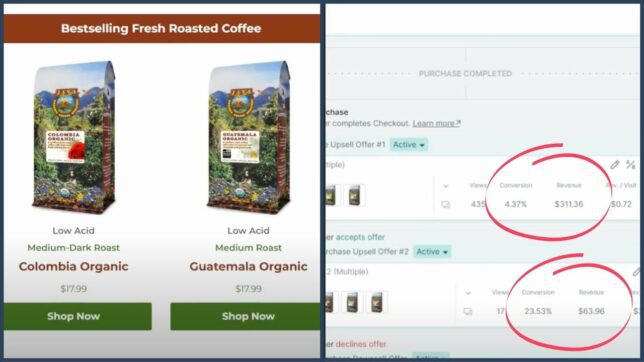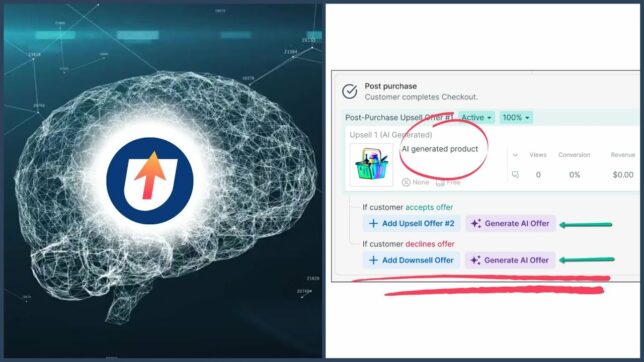Hi! This is Ashley, Zipify’s Affiliate Manager.
I know our blog posts usually focus on major digital channels like Facebook, email, Google and YouTube. So in this post I’m going to switch it up a bit and show you why affiliate marketing is an important channel to add to your marketing stack.
I’m going to tell you what affiliate marketing is (briefly, for those who don’t know), and why it’s one of the safest investments you can make in acquiring new customers and increasing sales.
Then, I’ll show you how to quickly set up an affiliate program for your brand, including:
- How to attract qualified, effective affiliates
- How to maximize sales through detailed tracking and program management
- An app that makes this whole process quick and easy
Ready? Let’s get started!
What is Affiliate Marketing?
Let’s just get this out of the way: affiliate marketing is an arrangement where your business pays someone an agreed upon commission for an agreed upon result. This result can be website traffic, email opt-ins, video views, or any number of things. But the most common metric — and the one we’ll use as an example in this post — is sales.
It’s important to remember that this is a results-based arrangement. If an affiliate produces a sale, they receive a commission; if they don’t produce a sale, they don’t receive a commission.
Why Use Affiliates?
Your goal for any marketing strategy is to get a good return on your investment, and in that respect affiliate marketing delivers big time.
For starters, it requires low initial investment, making it an ideal channel for business owners operating with a small marketing budget. Unlike Facebook advertising, which requires you to invest money in ads if you want to get any sales, affiliate marketing requires almost no upfront cost on your part. It is up to your affiliates to invest in the marketing required to produce sales; only after they produce sales do you give them a commission.
Not only is affiliate marketing low-investment, it’s also low-risk. While a failed ad campaign might lose you thousands of dollars, a failed relationship with an affiliate (knock on wood) costs you almost nothing. If they produce no sales, then they receive no commission. Simple as that.
So, we’ve established that you don’t need to put a lot into an affiliate program, but do you get anything out of it? Yes! Not only can affiliates generate a ton of revenue for your brand, they’re also a great way to reach new audiences.
With affiliates putting up the investment and taking the risk, it might sound like they’re getting the short end of the stick here, but don’t worry — this arrangement is mutually beneficial. While you enjoy benefits like low risk, low investment, and reaching new audiences, your affiliates get to generate revenue without any overhead for sourcing, fulfilling, or supporting the product; they also get to keep their audiences engaged with new and exciting products without actually creating the products themselves.
How to Set Up an Affiliate Program
Affiliate marketing might sound complicated, but when it comes down to it, you’re really only doing two things: 1. Finding affiliates, and 2. Paying them when they generate sales. Let’s look at how to do this (then we’ll go deeper).
Where to Find Affiliates
The secret to a good affiliate program is, not surprisingly, good affiliates! A quality affiliate is someone who:
- Is already familiar with your brand, your product and your audience
- Genuinely and enthusiastically believes in your brand message
- Has an audience that will find your product relevant
(TIP: Ideally, affiliates will already have an audience of their own, even if it’s just their social followers. But if your affiliate plans to advertise to cold traffic then make sure they’re not focusing on the same channels as you, or they will compete with your efforts.)
The question is, how do you find these magical people?
When first launching your affiliate program, you already know a group of people who check all these boxes: your customers! Your current customers are the first (and best) place you should look for new affiliates.
Because they purchased from you, you already know they like your product and believe in your message, and even if they don’t have a big audience, they’re likely in the same demographic as your target audience — and so are their friends!.
One of the easiest ways to mine your customer base for affiliates is by using the Shopify app Refersion. They have an amazing post-purchase notification feature that allows you to recruit satisfied customers into referring your brand to friends, family, and social connections. (This app also does a lot of other amazing things that will help you launch and run an affiliate program. I’ll tell you about them throughout the post.)
How to Attract High-performing Affiliates
The job isn’t finished when you find good prospects; now you have to convince them to become affiliates! To convert as many prospects as you can, you want to reduce the friction of signing up and make the process as easy as possible.
When reaching out to potential affiliates, it helps to send them to one location that has all the important information they need — like your brand’s mission, story, and purpose; what you’re looking for in an affiliate; and what compensation you are offering — and then let them apply directly from that page.
If you want a really easy way to launch an affiliate sign-up page, again, you should check out Refersion. It lets you publish a page and customize it with all of the important information above, so you can attract the most qualified affiliates.
How to Manage Your Affiliate Program & Maximize Revenue
With most marketing strategies, you want to start by using best practices, but the real secret to making it successful over the long term is data. Well, this is no different.
To keep your program running smoothly, you need to be able to accurately track sales so affiliates are getting paid for their conversions. And if you want to get more granular, you can even track how effective each affiliate is, especially based on which marketing channels they’re using. This information will be useful when recruiting future affiliates, and it can even show you which channels to focus on in your own marketing.
Want affiliate tracking software that gives you all the data you need in a way that’s super easy to understand? You guessed it: Refersion is your best bet. It helps you keep track of all important KPIs (no matter what they are for your brand), referral links, coupon codes, and more.
How to Keep Your Affiliates Happy
An unhappy affiliate is an unmotivated one, and that usually results in poor marketing on their end and low sales on yours. Fortunately, I have some easy ways to help keep your program strong by building relationships with your affiliates and making them feel appreciated.
Compensation
The best way to keep your affiliates motivated is by paying them. (This one is non-negotiable.) And while you need to profit off of these sales as well, it’s important to understand that the higher commission you offer, the better affiliates you will attract and the more motivated they will be.
Common commission structures include:
- Percentage of the Sale
- Flat Rate Commission
- Tiered Commission (Based on Sales Volume)
You can also do a hybrid structure that includes several of these models and is based on performance.
When deciding on compensation, it’s important to calculate how much your product costs you and how much you can afford to pay for a sale. For example, if you sell a physical product, you have hard costs associated with producing and shipping each product you sell; on the other hand, if you sell a digital product, while your production and shipping costs might be lower, your customer support costs are most likely higher.
Perks
Another way to show your affiliates you appreciate them is through perks — i.e., extra benefits in addition to their primary compensation that are not necessarily outlined in their contract.
Welcome boxes or exclusive swag like t-shirts can make your affiliates feel special right off the bat. (And while they’re out and about wearing your hat, carrying your tote, or driving their car with your bumper sticker on it, they’re also increasing brand awareness.)
Another perk you can offer affiliates is customized marketing assets, like:
- Co-branded Landing Pages
- Vanity Tracking Links
- Personalized Coupon Codes
Partner events, both location-based and virtual, are another great way to pamper your affiliates and make them feel like part of the team. Private social channels on platforms such as Facebook and Instagram can enhance the feeling of exclusivity among your top affiliates.
This mix of compensation and special perks will help you motivate your affiliates to make more sales, and ensure you hold on to your best affiliates and don’t lose them to another brand.
Other Forms of Affiliate Marketing
Direct affiliates aren’t the only way to launch a low-risk, cost-effective marketing program. Other forms of affiliate marketing can offer similar benefits:
Coupon and Discount Sites
Sites such as RetailMeNot are entity affiliates that host promo codes and coupons for various companies. When a potential customer searches for a discount, these sites offer a code and refer them back to the purchase page. Though such sites can drive traffic to your brand by suggesting you as an alternative, they can also send your customers to a competitor.
Search
These affiliates run search campaigns on a performance basis. Monitor their search term bidding, and set clear parameters in your terms and conditions. Having them rank near your home page in search results is good for your brand, because it multiplies your listings in the search algorithm, but make sure that search affiliates don’t end up ranking higher than you.
Bloggers
This kind of marketer runs their own website(s) where they create unique content that they use to drive sales. This content spreads awareness of your brand and generates search results at no cost to you. Bloggers may have niche audiences, but their followers are typically loyal, making it an effective visibility source.
Review Sites
While these sites might cover multiple brands or topics, they will usually cover a certain category of product, such as health and beauty, mattresses, or subscription boxes. By giving a review of your product or service, this kind of affiliate helps customers evaluate the purchase based on the pros and cons that are relevant to them. A good review can result in a lot of conversions! But a bad one? Well…
Loyalty / Cashback Reward Sites
These are a bit different than coupon sites. They pay back a portion of their commissions to anyone who purchases an item through their links. Such sites include Honey and Ebates and can help new customers find you when these sites promote discounts for your brand.
Email Affiliates
This variety of marketer uses mailing lists, subscriptions, and newsletters to promote their affiliate links to your brand. This can be more effective than a mass email campaign because active subscriptions aren’t as susceptible to spam filters.
Big Marketing Groups
Large media and national publications are more likely to belong to even bigger media conglomerates. Your typical big magazine will also have their own website and other associated content.
Ready to Start Your Affiliate Program?
I hope this post has helped show you why affiliate marketing can be such a valuable strategy for your brand.
If you’re looking to get started, Refersion is offering friends of Zipify an extended, 30-day free trial.
They’re also hosting a special onboarding/training session to help you get started and answer any additional questions. I really encourage you to check it out.
Thanks for reading, and good luck with your affiliate program!

